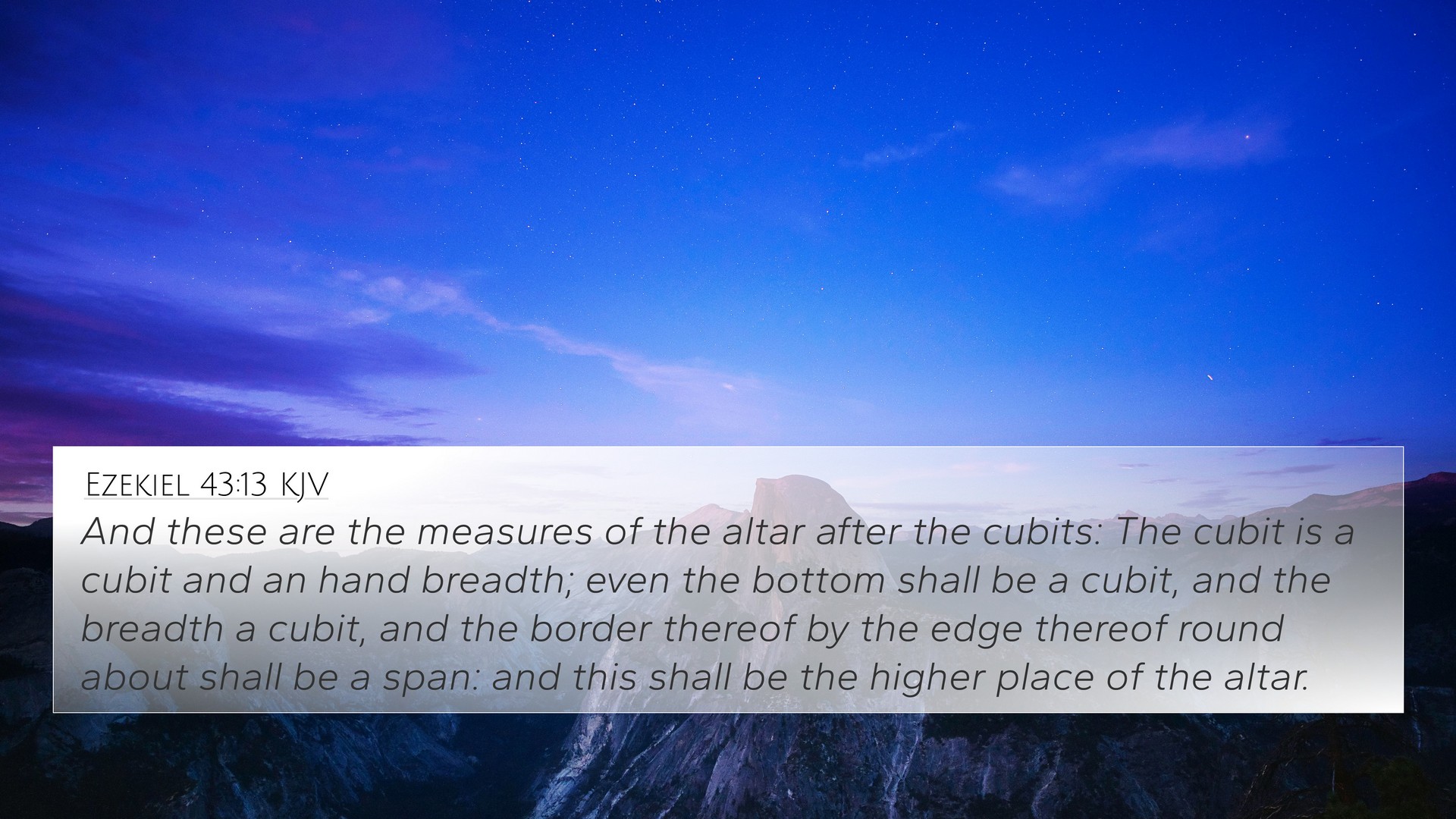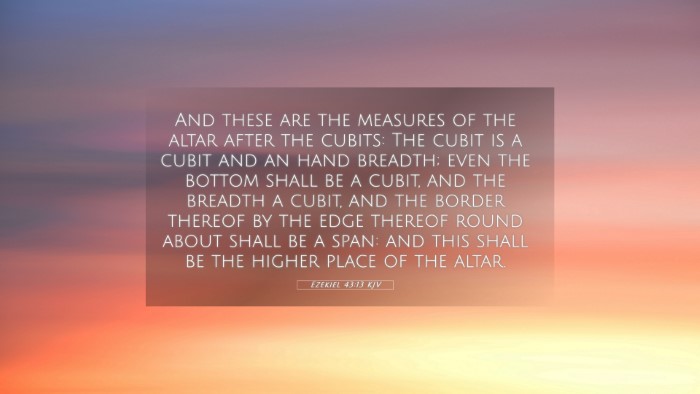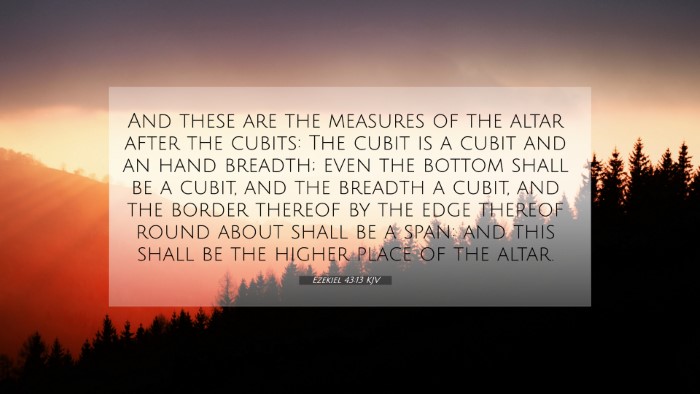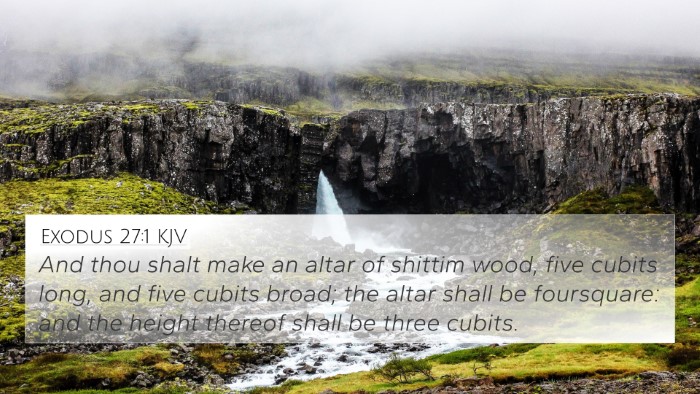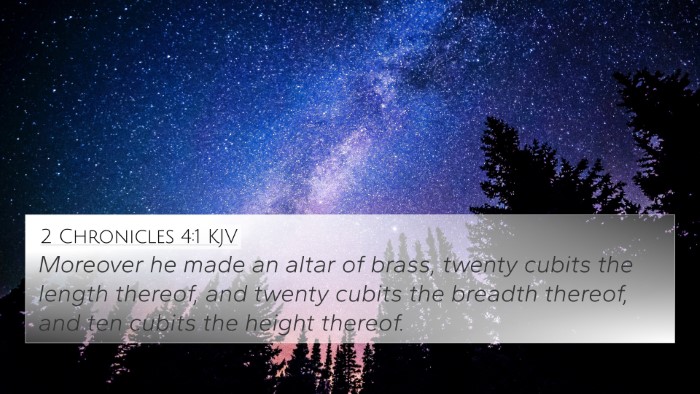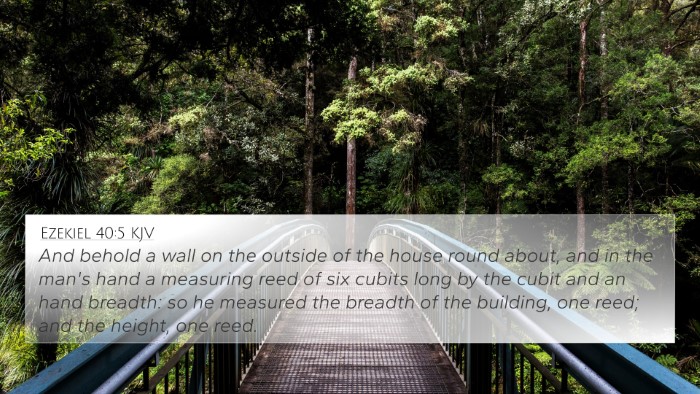Ezekiel 43:13 - Meaning and Interpretation
Ezekiel 43:13 states: "And these are the measures of the altar after the cubits: The cubit is a cubit and a hand breadth; even the bottom shall be a cubit, and the breadth a cubit; and the border thereof by the little cubit round about shall be a span: and this shall be the higher place of the altar." This verse introduces specific measurements and details concerning the altar in the future Temple, emphasizing God's holiness and the seriousness of worship.
Commentary Insights
This passage has drawn extensive commentary from various theologians, providing a comprehensive understanding of its significance.
- Matthew Henry: He emphasizes that the measurements of the altar are not merely architectural details but serve a deeper purpose in setting apart a holy space for God's presence. The precision of measurements implies God's desire for order in worship and the importance of approaching Him with reverence.
- Albert Barnes: Barnes interprets the cubit and its subdivisions as symbolic of God's authority and precision. He notes that the altar’s measurements reflect the grandeur of God's holiness and the required reverence in the Israelites' approach to worship.
- Adam Clarke: Clarke highlights the spiritual implications of the physical structure. He stresses that the altar stands as a representation of Christ, signifying the focal point for atonement and communion with God. Clarke connects the measurements to the fulfillment of divine plans for worship and sacrifice.
Biblical Cross-References
Understanding Ezekiel 43:13 is enriched by examining related verses. Here are several key Bible cross-references that demonstrate the connections between this verse and others:
- Exodus 27:1-2: Describes the construction of the altar of burnt offerings, emphasizing the significance of its design.
- 2 Chronicles 3:3: Provides details on Solomon's altar, illustrating the continuity of God's instructions concerning worship structures.
- Revelation 11:1: Mentions a measure of the temple, linking the concept of divine measurement in worship with prophetic revelation.
- Hebrews 9:9-11: Discusses the earthly sanctuary versus the heavenly, connecting the physicality of the altar to spiritual realities.
- Isaiah 56:7: Highlights the house of prayer, connecting the altar's role in worship with God's desire for inclusive worship.
- Ephesians 2:20-22: Talks about the church as a holy temple, drawing parallels between the Old Testament temple and the body of Christ.
- Romans 12:1: Exhorts believers to present their bodies as living sacrifices, echoing the purpose of the altar.
Connecting Themes
The themes in Ezekiel 43:13 resonate throughout the Bible. This verse can be examined through different thematic connections that emphasize worship, holiness, and divine order:
- The Holiness of God: Highlighted in Leviticus 10:3, where God’s holiness is emphasized in the context of worship.
- Divine Instructions for Worship: Found throughout the Pentateuch, illustrating how God provides specific guidelines for entering into His presence.
- The Significance of Sacrifice: This theme connects with Isaiah 53, portraying the ultimate sacrifice Christ would be for humanity.
Using Cross-References for Deeper Understanding
Utilizing tools for Bible cross-referencing can further illuminate the meaning of Ezekiel 43:13. Resources such as Bible concordances, Bible cross-reference guides, and cross-reference Bible study methods can be instrumental in uncovering deeper insights. Here are steps to effectively use these tools:
- Identify Key Terms: Start with key terms from Ezekiel 43:13, such as "altar," "cubit," and "measurements."
- Search Related Verses: Use a Bible concordance to find verses that reference these terms.
- Analyze Connections: Look for thematic links between the passages to understand broader principles of God's instructions for worship.
Conclusion
In summary, Ezekiel 43:13 serves as a profound reminder of the importance of holiness, reverence, and the structure of worship in the biblical context. By engaging in cross-referencing Biblical texts, one can explore the intricate dialogue between various scriptures that speak to God's character and His directives for His people.
